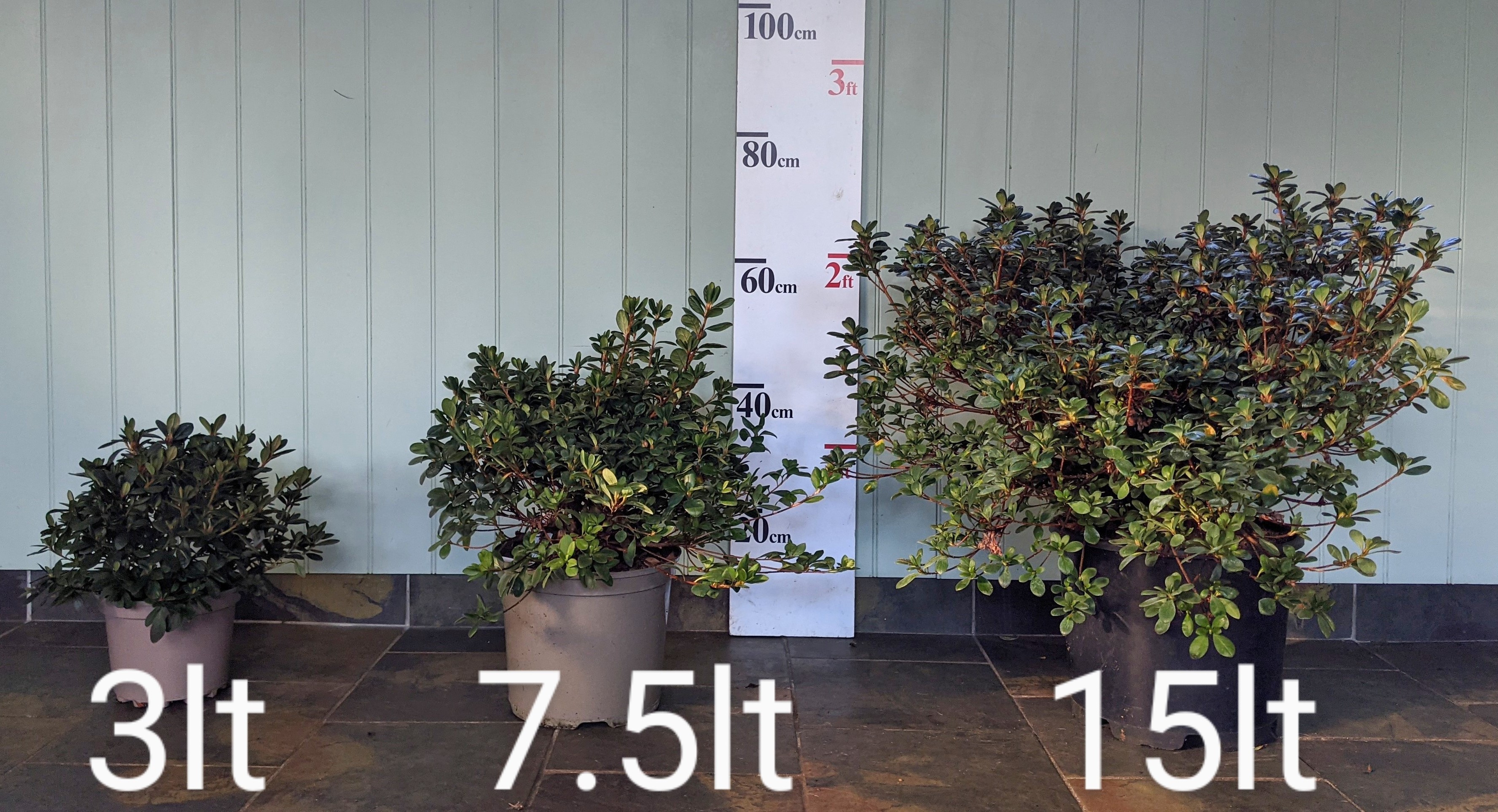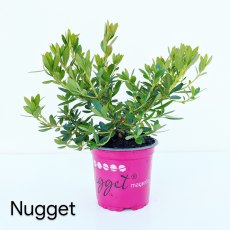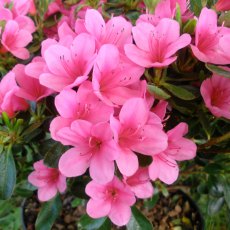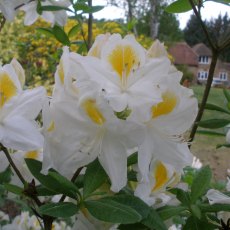Evergreen Azalea Elsie Lee AGM
Item: AELSIE
 In stock
In stock
May
Purple & Blue
50-75cm
Not Scented
No
To -15 °C
Collect in Store
This item is available for collection.
Home Delivery
UK mainland delivery from £8.95
Stunning double lilac-lavender flowers up to 60mm which last well, flowering in late May. A recent introduction and proving very popular, as this is a different colour to most other azaleas. A neat grower with a fairly upright habit, sometimes semi deciduous foliage. Height 60-80cm in 10 years.
- Ideal for containers and small gardens, makes a real statement!
- Easy to grow.
- Group:Evergreen Azalea (Shammarello hybrid).
- Parentage: 'Desiree' X ' Rosebud' (Gable)
- Hybridization date: pre 2000 (1960).
- Bred by: A.M. Shammarello. Origin: American.
- Habit: Upright.
- Ideal position: Most garden situations.
- Ideal soil: pH 4.5 to 6.
- RHS Hardiness Rating: H5.
- How we usually propagate this plant: Cutting.
- Awards: RHS Award of Garden Merit.
Customer Reviews



Good to know
Evergreen Azaleas
From a botanical point of view, evergreen azaleas are part of the rhododendron family, but typically they only have 5-7 stamens in the flowers instead of 11-13 stamens present in other rhododendrons. Evergreen azaleas, sometimes known as Japanese azaleas, are as popular as ever, and are ideal for any size of garden from a window box to a large estate. Most azaleas grow to 60-75 cm in 10 years, but look out for our speciality nakaharae azaleas which are late flowering, prostrate, and excellent for cascading over walls or tubs.
Some of the first evergreen azaleas were introduced by Ernest Wilson (Wilson’s 50) from Japan at the beginning of the twentieth century. These small flowered varieties are full of character, best seen at the Isabella Plantation in Richmond Park where they look delightful. However, these early plants are not as hardy as modern varieties such as those bred in Northern Germany. Other breeders, particularly in America, have concentrated on breeding larger flowers which can certainly look impressive. When buying plants, consider the hardiness range needed for your area, as some plants are much hardier than others. Our range should not be compared to the R. indica types which are sold as houseplants and are not fully hardy outside. Evergreen azaleas prefer light dappled shade, though they will tolerate sun or shady positions.
All require good moist ericaceous soil with a high organic content. For a guide to plant spacing, use the height we give in 10 years as a guide to the distance between each plant, or approximately 3 plants per m². Plant no deeper than the top of the rootball, and dig in plenty of good ericaceous compost around the sides. A teaspoon of slow release feed is sufficient for a 3 litre plant, rising to a small handful for a mature plant. Evergreen azaleas are suitable for growing in pots and containers; re-pot every 3 years for best performance.
Size Guide

picture for example only
The Basics
Ideal soil
Acidic soil, good organic content, pH 4.5-6.0. Inkarho range of rhododendrons will tolerate soils up to pH7.5
Sun or Shade
Light dappled shade is best for most varieties.
Shelter
Refer to hardiness rating. Give young plants protection.
Site Selection
Avoid close to trees, roots, invasive weeds, walls, hot patios, dry banks and waterlogged soils. Do not use weed matting or stone mulch.
Plant spacing
Use the height shown in 10 years as a guide to the distance between each plant. Allow room for plant to fill out. If planting closer for instant impact, be prepared to move plants after a few years.
Compost
- 3 litre pot, dig in 10-20 litres of ericaceous compost.
- 7.5 litre pot, dig in 20-30 litres of ericaceous compost.
- 70-80cm specimen, dig in 60 litres of ericaceous compost.
- 100-120cm specimen, dig in 120 litres of ericaceous compost.
Planting depth
Plant high in the ground, with the top of the rootball visible.
Feeding
Slow-release ericaceous feed recommended in March and straight after flowering.
Mulch
Recommended every few years.
Water
The key ingredient! Keep moist all season, especially the critical time at end of June for flower bud initiation. Tap water is better than no water. Heavy dose at least once per week in dry weather.
Drainage
Ensure good drainage in winter, especially with yellow flowering varieties. Avoid waterlogged sites.
Pruning
Rhododendrons and Camellias: Not normally required. Tidy wayward shoots after flowering.
Evergreen azaleas and Bloombux can be clipped into a low hedge.
Magnolias and Acers: Formative pruning when young to shape into a tree or bush.
Deadheading
Remove old flower-heads, particularly on young or weak plants.
For further advice see here
Delivery & Returns
Our website calculates the delivery charge according to weight and delivery location throughout the UK. To see these charges, please enter your postcode at the checkout, and you will see the charge vary as you add more items to your wheelbarrow.
 Millais Nurseries
Millais Nurseries















